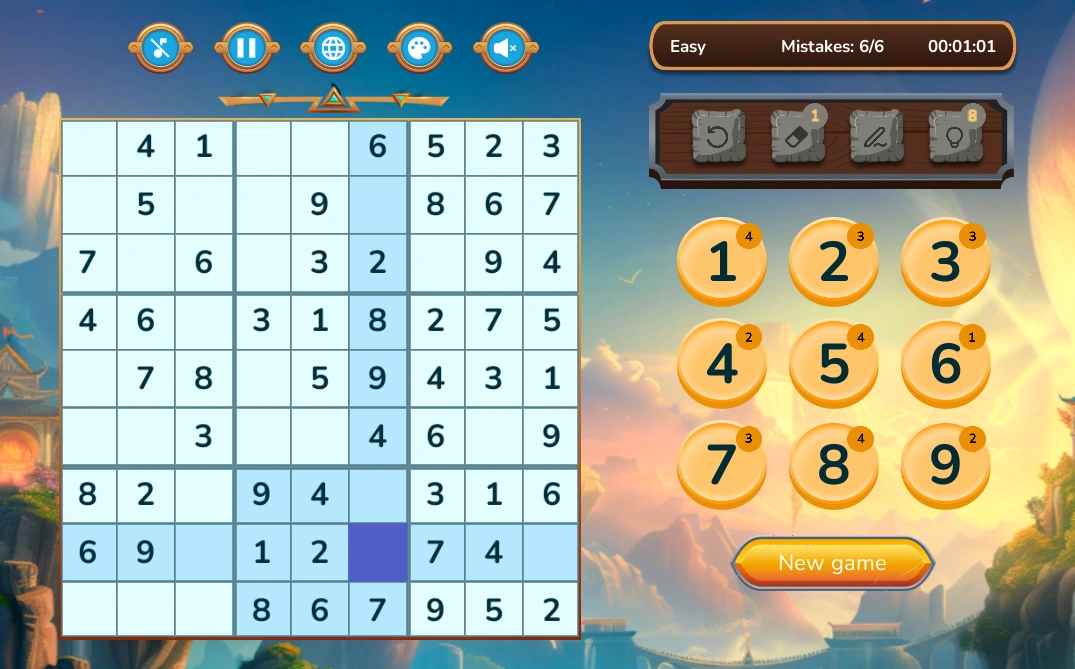Beginner-Friendly Easy Sudoku to Master the Basics

Sudoku is a delightful and captivating puzzle game that proves both simple to grasp and tough to conquer. The journey kicks off gently, sprinkled with pre-filled cells that serve as your guiding lights. As you advance, these clues decrease, encouraging you to rely on pure logic and deduction skills.
In contrast to crossword puzzles, which lean heavily on vocabulary, Sudoku focuses on logical reasoning. It enhances your knack for strategic thinking, pattern recognition, and the ability to discern connections between numbers and cells. These universal skills come in handy not just in math and science but also in everyday scenarios like planning and troubleshooting.
Engaging with Sudoku offers endless hours of entertainment. Tackling puzzles like Sudoku can enhance memory, focus, and cognitive agility. With practice, more advanced strategies will naturally unfold, allowing you to tackle even the most challenging puzzles.
Basic Rules for Sudoku Beginners

Mastering Sudoku as a beginner sets you up to advance to more complex puzzles as your skills improve. Here are a few basic rules for Sudoku beginners:
1. Understanding the 9x9 Grid
The Sudoku grid consists of 81 squares arranged in a 9x9 layout. The rows and columns of the grid are divided. The 9x9 grid is split into 3x3 boxes known as regions. Every row, column, and region should have numbers from 1 to 9 without duplicates. It means that you can't have the same number repeated in a row, column, or region.
2. Recognizing Given Numbers
Sudoku puzzles start with some given numbers, typically 20-30 of the 81 spaces filled in. These numbers are fixed — they cannot be changed. You can leverage them as clues to figure out the empty spaces around them. Look for rows, columns, or boxes that already have a number, so you know not to put that number in the remaining spaces. For example, if the top-left 3x3 region already contains a 5, you know that 5 cannot go into any other cell within that region.
3. Applying the Process of Elimination
The most fundamental technique in Sudoku is elimination. You look at each empty cell and determine which numbers are still possible based on the fixed numbers around it.
Any number already used in that row, column, or region is out. Cross out those options in your mind. Keep crossing out numbers until just one option is left for that cell. That lone number standing must be the missing one for that spot.
Sudoku Insights for First-Time Players
For first-timers, the best advice is to focus on rows and columns with fewer missing numbers. Scan for cells where only one possible number will fit without breaking the rules. Try using a pencil to jot down possible numbers lightly in the margins or directly in the cells.
Also, look for pairs or triplets of numbers that fit together in a row or column. Slowly, you'll eliminate options and fill in the grid. Once you feel confident, challenge yourself with slightly larger grids, such as 6x6, before moving to the standard 9x9 size.
Start Your Easy Sudoku Journey Today
With a basic grasp of the Sudoku rules and techniques, you'll be ready to start tackling puzzles. Begin with very easy 4x4 and 6x6 grids, and then work your way up to standard 9x9 ones. Take it step-by-step, be patient, and have fun. With regular practice, you'll be a Sudoku master in no time.



